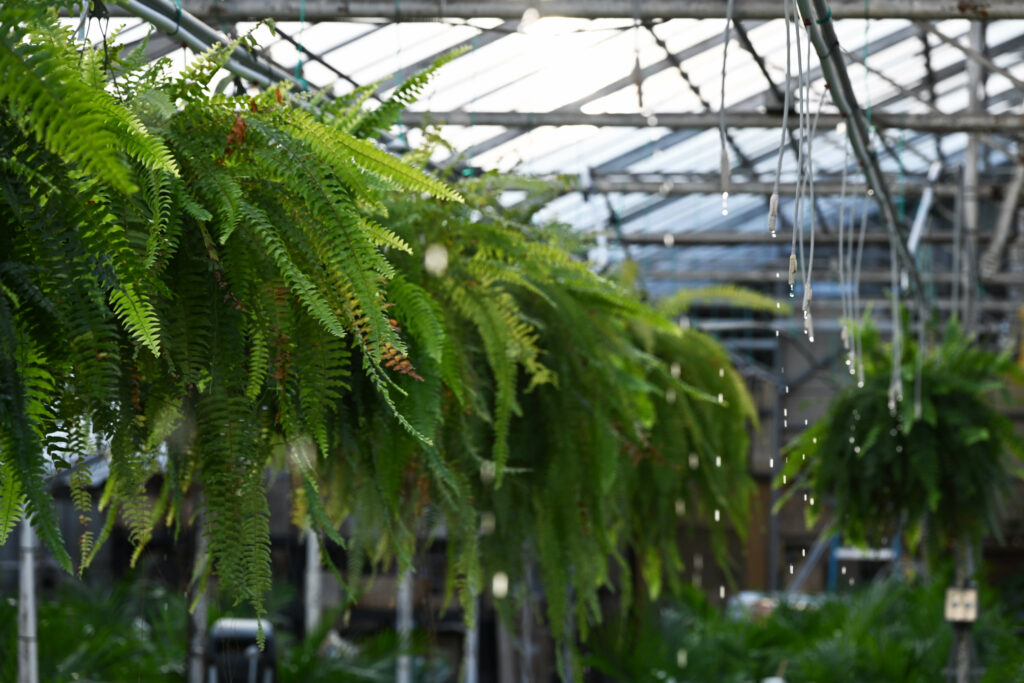

To understand how flower growing has changed in the past four decades, consider 1, 7 and 9.
Those numbers identify the three remaining greenhouses at Royer’s corporate complex in Lebanon. As the breaks in number sequencing suggest, Royer’s had more greenhouses back when we grew our own flowers – nine total at the corporate complex and six more nearby on Colebrook Road.
However, a perfect storm occurred in the 1970s: An oil embargo made it prohibitively expensive for Royer’s and other florists to heat their greenhouses, while Bogota, Colombia was found to offer ideal temperatures and sunlight for growing flowers. In the intervening years, most flower growing has shifted to South America.
Today, as Tom Royer, CEO, pointed out, Royer’s isn’t a grower but rather a holder of plants. That is, the company buys from growers both inside and outside the United States. Those plants and flowers are delivered to the corporate complex, where they reside before being distributed to Royer’s 16 stores in seven counties.
Much of the “holding” occurs in the three greenhouses which houses equipment designed to improve plant quality and operating efficiency.
TURN OF A TIMER
Over the past few years Royer’s has installed new flood tables in each of its remaining greenhouses. This automatic plant watering system isn’t new to Royer’s though, the company has utilized this technology since 1999.
Each flood table has its own water reservoir. Once per day, we turn on a timer that floods the table for typically 15 minutes but longer if external conditions warrant. The plants, lined up in rows, drink through openings in the bottom of their containers.
Drip Irrigation systems are also utilized in the greenhouses, specifically for when we have hanging baskets, such as around Mother’s Day. Each water line is placed in or above a hanging basket and when turned on, the water will slowly be absorbed into the soil.
With both systems, a worker doesn’t have to tend to each plant individually, a time-consuming proposition considering the hundreds of containers.
“Now I can water all these plants in 15 minutes,” Tom said, “whereas it would take somebody two or three hours to do that day after day after day.”




CONSERSVING WATER
The reduced labor also will improve quality, as watering won’t ever have to be sacrificed for the sake of other time demands. (In some cases, watering from above can cause damage, such as stains on violet petals.)
Of course, not all plants need the same amount of water.
“Just like people, they drink different, they eat different,” Tom said. Reflecting those differences, Royer’s separates plants by type (all violets on one bench, for instance) or at least by pot size and waters them accordingly.
Water that isn’t absorbed by the plants goes back into each table’s reservoir so it can be conserved and reused.
Another greenhouse variable is sunlight. In greenhouse 7, which holds blooming plants, a system of cables and pulleys operates the fabric shade cloths. By controlling the amount of sunlight, Royer’s can maintain an internal temperature of 75 degrees.
“If these shade cloths weren’t on here,” Tom noted on a warm, sunny day in early October, “it would be a lot hotter in here.”
Tom said the expenditure on flood tables and the shade system are the price of doing right by customers.
“It’s an investment in the future,” he said. “It’s worth it to me to do that because long term I’m going to have better product. It’s going to be taken care of properly. It will grow better, too.”